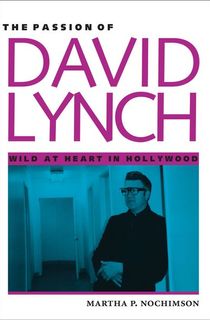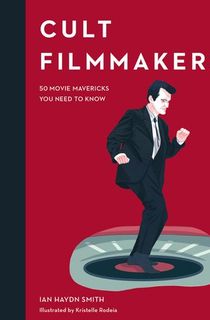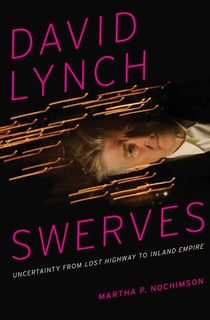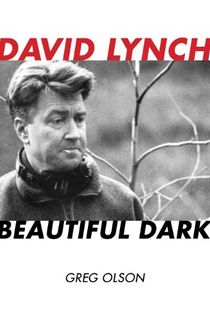Born in 1946, David Lynch fell in love with art as a teenager when a friend’s father gave him a copy of The Art Spirit by Robert Henri.
But deciding to dedicate your life to art in adolescence and actually pursuing it as an adult, proved tricky for Lynch. He struggled at two different universities before eventually settling in Philadelphia.
At the Pennsylvania Academy, Lynch made his first short film, Six Men Getting Sick (Six Times). The experience led to Lynch moving to Los Angeles where the unstructured and chaotic environment of the AFI Conservatory paved the way to his groundbreaking work, Eraserhead.
After Eraserhead’s underground success, Lynch directed The Elephant Man, landing eight Academy Award nominations, including Best Director. The critical acclaim and success launched his career.
Over the next forty years, Lynch created many cult classics in both film and television. But his desire to create a life dedicated to art stayed true. Exploring other mediums such as painting, photography, sculpture, and music, Lynch never tired of stretching the way he views the world—always through a distorted lens.
Here are nine books documenting the endlessly fascinating life of one of the most influential directors of our time.

The Passion of David Lynch
If you believe David Lynch, he didn’t know what he was doing 90% of the time. And perhaps it’s true that he was operating from some deep subconscious realm.
And Martha Nochimson believes that’s exactly how you should watch his films.
Starting with a look at his visual influences before moving into an in-depth analysis of Lynch’s films complete with unprecedented interviews with Lynch himself, The Passion of David Lynch explores the iconic director’s work from an innovative and interesting perspective.

Cult Filmmakers
When it comes to cult filmmakers, they come in all shapes and sizes.
Featuring profiles from popular directors like Tim Burton and David Lynch to some of the more surreal work of Alejandro Jodorowsky and Ana Lily Amirpour, you can get to know the minds behind some of the biggest cult classic films.
For some, success came early, for others, it took smaller groups of fanatical fans to keep their works alive.
Cult Filmmakers is the perfect companion for all lovers of cinema.

Damn Fine Cherry Pie
While David Lynch enjoyed success in both television and film before Twin Peaks became a cult classic, the show gave Lynch a credibility that helped maintain his career as he continued to push into the bizarre and surreal.
Damn Fine Cherry Pie features seventy-five recipes inspired by the show. Each recipe pays homage to not just the show, but Lynch himself, and is a must-have for fans who want to take their next rewatch to a whole new level.

David Lynch Swerves
When Lynch directed Lost Highway, it marked a new direction in his career. In the film, one distorted image takes center stage. It may have been the first time he used the technique, but it wasn’t the last.
In an in-depth conversation with Lynch, Nochimson delves into the unusual emphasis of these visual images in his work. It’s a complex and unique glimpse into Lynch's work.
It explores how he merged the spiritual and surreal, blending quantum mechanics and relativity as a way to shine a light on the beauty of the world, the dangers of materialism, and the wonderful hope that human potential has to offer.

Lynch on Lynch
As told through a series of interviews, David Lynch has compiled a detailed exploration of his work starting with his bizarre debut, Eraserhead, in 1977 and progressing through his career.
Lynch also discusses his other artistic endeavors such as his lifetime commitment to painting, photography, television projects, and even musical collaborations with Angelo Badalamenti.

David Lynch: Someone is in My House
When you think about David Lynch, films like Mulholland Drive or shows like Twin Peaks probably come to mind. But Lynch was an artist who wasn’t constrained to only filmmaking as his art form.
Part of what made his films so iconic was his use of visual imagery, and he cultivated that through an obsession with painting, photography, drawings, and sculpture.
In this one-of-a-kind book, fans can explore an entirely new facet of Lynch’s artistry and see how his fascination with texture and collage influenced his iconic films and television shows.

Room to Dream
It’s impossible to put together a list of books on David Lynch without including his own words. While he’s released books featuring interviews and his art, Room to Dream is the story of Lynch’s life.
With interviews from family, friends, actors, agents, musicians, and collaborators, Lynch weaves his own recollections of his life from his childhood and throughout his career.
This is the story of the iconic filmmaker’s life beyond the art.

David Lynch: The Unified Field
Celebrating a life of art, The Unified Field documents David Lynch’s first major museum exhibition in the United States.
Featuring many rarely viewed pieces, including early work from his early Philadelphia years, this collection spans from 1965 to the present day and features work from all periods of Lynch’s career.
While most are unrelated to the films and television shows Lynch is known for, the dark, sometimes violent themes that veer into the uncanny appear in all his work, offering a new glimpse into the director’s process and how he takes the visually obscure to create unforgettable imagery that lingers.

David Lynch: Beautiful Dark (The Scarecrow Filmmakers Series Book 126)
While many books have been written about David Lynch’s life and career, not many take the time to understand how the two are inextricably linked.
There is a symbiosis between his life experience and his art, and Greg Olson draws fans in to witness how one influences the other. With unprecedented access to family, friends, and coworkers, Olson examines not just the end result of his work, but how each film and show was conceived, crafted, and ultimately, completed.
This is one of the most intricate studies on one of the most influential directors of our time.





